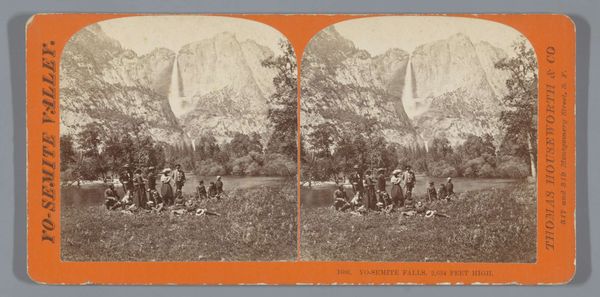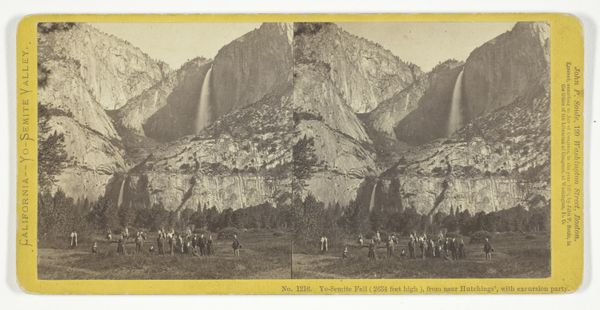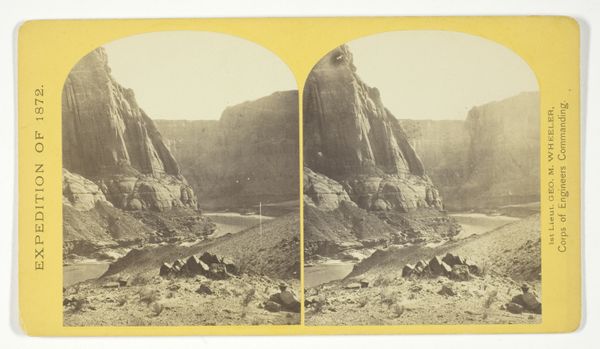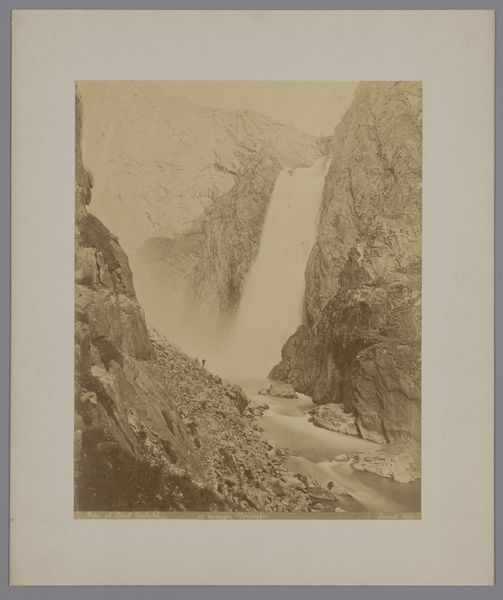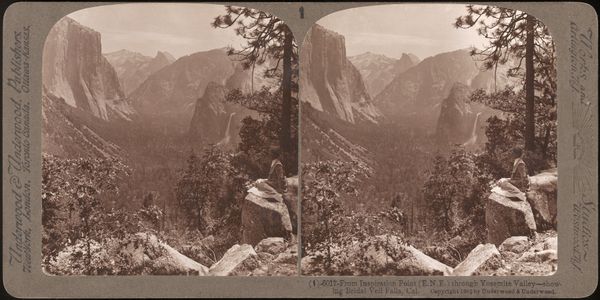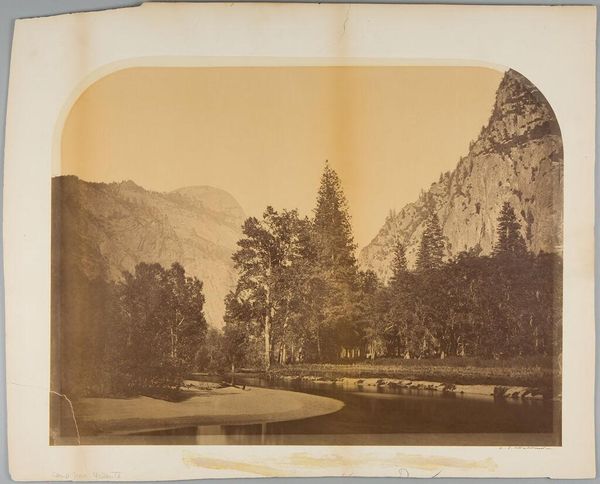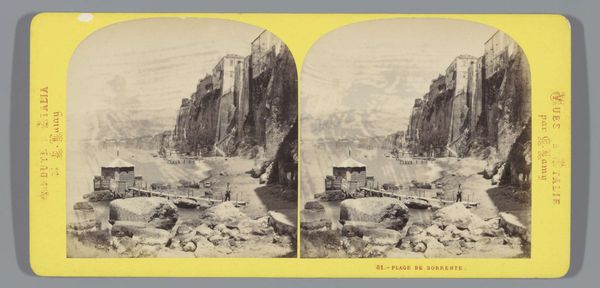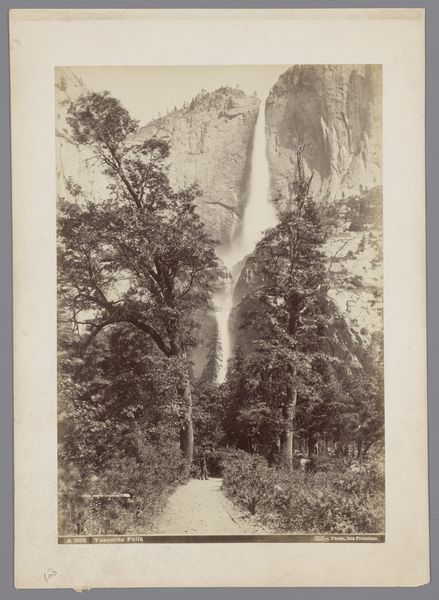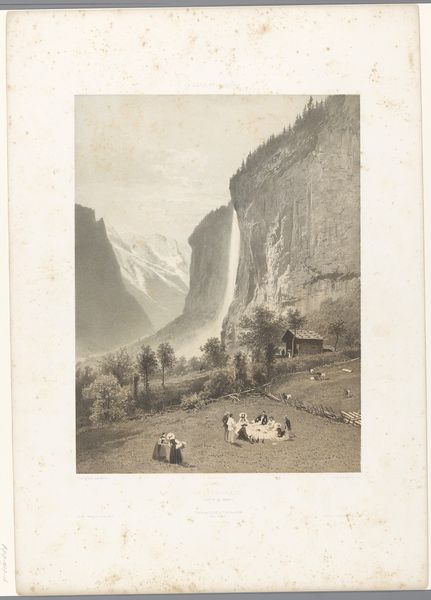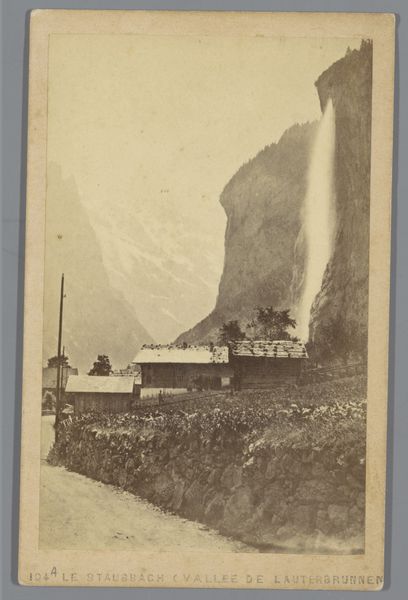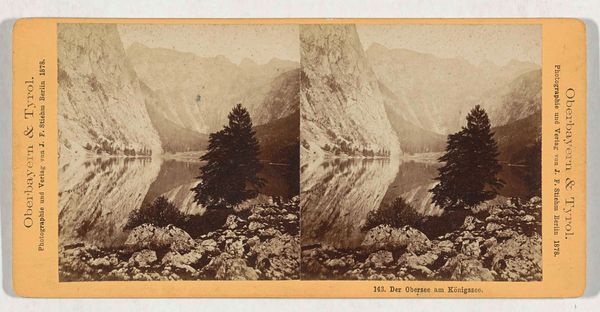
Yo-Semite Fall, (2634 feet high) from near Sentinel House, P. T. Barnum and Party 1870
0:00
0:00
print, photography
#
16_19th-century
# print
#
landscape
#
photography
#
hudson-river-school
#
men
#
united-states
Dimensions: 7.9 × 7.9 cm (each image); 8.5 × 17.4 cm (card)
Copyright: Public Domain
This stereograph of Yosemite Falls was made by John P. Soule, probably in the 1870s, using a process involving a portable darkroom and glass plates coated with light-sensitive emulsion. The very materiality of this image speaks to the era’s technological advancements, and its social context. Photography at this time was becoming increasingly commercialized, feeding a growing appetite for images of faraway places. Soule, like many photographers, capitalized on this trend by mass-producing stereographs, which offered viewers a captivating, three-dimensional glimpse of the world. The presence of P. T. Barnum and his party in the image subtly hints at the commodification of nature, transforming the sublime landscape into a spectacle for consumption. The laborious process of creating these images—from preparing the chemicals to developing the prints—contrasts sharply with the ease of consumption, reminding us of the complex relationship between labor, leisure, and the environment. This photograph challenges traditional notions of art, highlighting the intersection of technology, commerce, and the human desire to capture and possess the natural world.
Comments
No comments
Be the first to comment and join the conversation on the ultimate creative platform.
